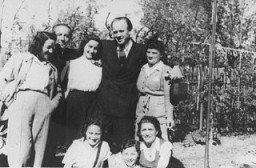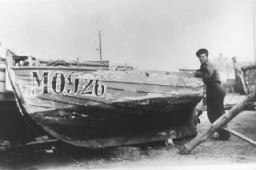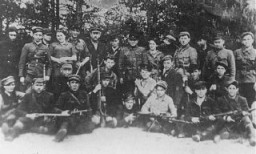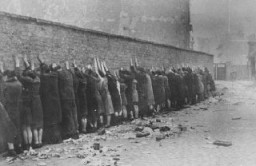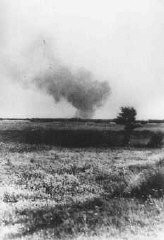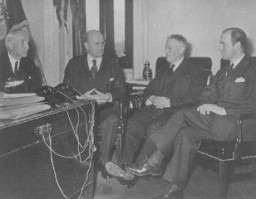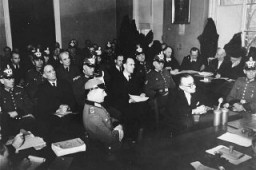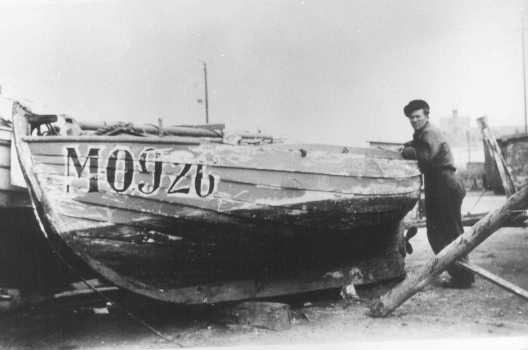
Rescue in Denmark
Rescue in Denmark Most individuals in occupied Europe did not actively collaborate in the Nazi genocide. Nor did they do anything to help Jews and other victims of Nazi policies. Throughout the Holocaust, millions of people silently stood by while they saw Jews, Roma (Gypsies), and other "enemies of the Reich" being rounded up and deported. Many of these bystanders told themselves that what they saw happening was none of their business. Others were too frightened to help. In many places, providing shelter to Jews was a crime punishable by death.
In spite of the risks, a small number of individuals refused to stand by and watch.These people had the courage to help by providing hiding places, underground escape routes, false papers, food, clothing, money, and sometimes even weapons.
Denmark was the only occupied country that actively resisted the Nazi regime's attempts to deport its Jewish citizens. On September 28, 1943, Georg Ferdinand Duckwitz, a German diplomat, secretly informed the Danish resistance that the Nazis were planning to deport the Danish Jews. The Danes responded quickly, organizing a nationwide effort to smuggle the Jews by sea to neutral Sweden. Warned of the German plans, Jews began to leave Copenhagen, where most of the almost 8,000 Jews in Denmark lived, and other cities, by train, car, and on foot. With the help of the Danish people, they found hiding places in homes, hospitals, and churches. Within a few weeks, fishermen helped ferry some 7,200 Danish Jews and 680 non-Jewish family members to safety across the narrow body of water separating Denmark from Sweden.
The Danish rescue effort was unique because it was nationwide. It was not completely successful, however. Almost 500 Danish Jews were deported to the Theresienstadt ghetto in Czechoslovakia. Yet even of these Jews, all but 51 survived the Holocaust, largely because Danish officials pressured the Germans with their concerns for the well-being of those who had been deported.
Compared to other nations that came under Nazi Germany’s control, Denmark enjoyed several advantages that helped make the rescue of its Jewish population possible. It was only lightly occupied and, until August 29, 1943, had a largely independent government that had not adopted antisemitic measures, such as marking Jews. Copenhagen, where Denmark’s small Jewish population was concentrated, is less than twenty miles from Sweden, which, as the roundups began, announced it would admit them. In addition, the German military and even most Nazi officials in Denmark made little effort to prevent Jews from escaping. The situation was very different in countries like the Netherlands and Poland that had much larger Jewish populations and that came under total occupation and direct rule by Germany. There, the possibilities for rescue were far smaller and the risks far greater. Nevertheless, without the Danes’ widespread support for Jews and active resistance to Nazi policies, few if any Jews would have survived the Holocaust in Denmark.
There are numerous stories of brave people in other countries who also tried to save the Jews from perishing at the hands of the Nazis. Nearly 12,000 Jewish children were rescued by clergymen in France who found housing for them and even smuggled some into Switzerland and Spain. About 20,000 Polish Jews were able to survive in hiding outside the ghetto in Warsaw with the assistance of non-Jewish Poles. Some Jews were even hidden in the Warsaw Zoo by the zoo's director, Jan Zabinski.
Key Dates
August 29, 1943
Danish government resigns
The Germans occupied Denmark on April 9, 1940. The Danes and the Germans reached an agreement in which the Danish government and army remained in existence. Despite the occupation, the Germans did not initiate deportations from Denmark. In the summer of 1943, with Allied military advances, resistance activity in Denmark increases in the form of sabotage and strikes. These actions cause tension between the occupying German forces and the Danish government. In August 1943, the Germans present the Danish government with new demands to end resistance activities. The Danish government refuses to meet the new demands and resigns. The Germans take over the administration of Denmark and attempt to implement the "Final Solution" by arresting and deporting Jews. The Danes respond with a nationwide rescue operation.
October 1, 1943
German deportation action begins in Denmark
German police authorities seek to round up Jews in Denmark at the close of Rosh Hashanah, when Jews are expected to be in their homes. The German plans were leaked three days earlier, however, and most Jews are in hiding. The next day, Sweden announces it will admit Jewish refugees from Denmark. The Danish underground and general population spontaneously organize a nationwide effort to smuggle Jews to the coast, where Danish fisherman ferry them to Sweden. In little more than three weeks, the Danes ferry more than 7,000 Jews and close to 700 of their non-Jewish relatives to Sweden. Despite the Danish efforts, some 500 Jews are arrested by the Germans and deported to the Theresienstadt ghetto.
June 23, 1944
Danish delegation visits Theresienstadt
A Danish delegation joins representatives of the International Red Cross on a visit to the Theresienstadt ghetto in Bohemia. To deceive both these visitors and world opinion about Nazi treatment of the Jews, the SS beautifies the ghetto and creates the impression that Theresienstadt is a self-governing Jewish settlement. Unlike most of the other prisoners in Theresienstadt, the 500 Danish prisoners there are not deported to concentration camps and are permitted to receive parcels from the Red Cross. On April 15, 1945, the Danish prisoners are released from the ghetto into the hands of the Swedish Red Cross. This is a result of negotiations between Swedish government representatives and Nazi officials in which Scandinavian prisoners in camps, including Jews, are transferred to a holding camp in northern Germany. These prisoners are eventually sent to Sweden, where they stay until the end of the war. Out of the some 500 Danish Jews deported, about 450 survive.
